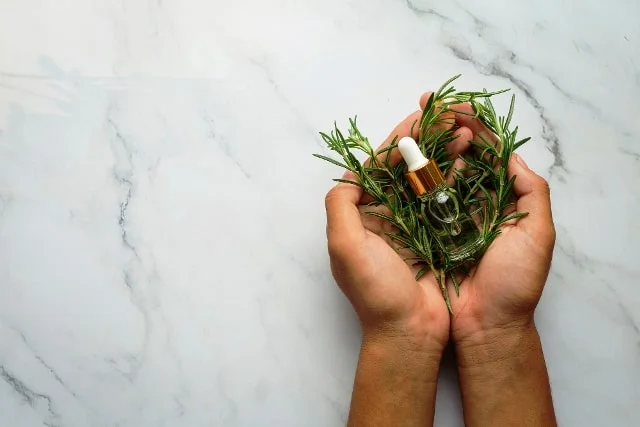As a newly practicing Phytotherapist, I aimed to answer many common questions: What is Phytotherapy? How is it applied? Who is it for? Who practices this method? Why should it be preferred when modern medicine and chemical drugs are available? My goal is to shed light on these questions...
What is Phytotherapy?
Phytotherapy is a treatment method that involves the use of plants with scientifically proven medicinal and therapeutic effects. These plants have a well-defined chemical composition and content, and they are applied using effective and validated methods.
Phytotherapy does not dismiss modern medicine and is not an alternative to it. Instead, it complements and supports modern medical treatments and, in some cases, can even be used as a standalone treatment.
The integrative use of Phytotherapy alongside modern medicine has been recognized by the World Health Organization (WHO). In recent years, it has gained increasing popularity, especially in Western countries such as Germany, France, and the Netherlands.
Traditionally, medical treatment has been applied only after the onset of diseases and symptoms. However, modern healthcare has now reached the point of preventive medicine. In this approach, diseases are prevented before they even begin, the progression of newly emerging chronic diseases is slowed down, and progressive conditions are controlled in their early stages. Phytotherapy plays a highly effective role in achieving these goals.
How is Phytotherapy Applied?
Phytotherapy is not simply about boiling and drinking various plants or mixing different medicinal herbs into a paste. Such approaches do not align with the true principles of Phytotherapy!
Not every mint plant has medicinal properties, and not every chamomile can be used for therapeutic purposes. Different parts of a plant—its fruits, flowers, leaves, stems, and roots—may be used for different purposes. For example, the Tribulus Terrestris plant (also known as puncture vine) contains medicinal compounds in its flowers, leaves, and stems that enhance libido, improve sexual performance, and combat chronic fatigue. However, its root contains toxins. Similarly, there are dozens of different types of chamomile, many of which look alike, yet some possess medicinal properties while others can be toxic (some even have insecticidal effects).
If a plant-based preparation is made by someone who is not an expert, what appears to be a healing herb could have entirely poisonous effects.
For this reason, phytopharmaceutical products have been developed. These are carefully extracted by specialists and formulated into tablets, syrups, or creams containing the desired active compounds in precise dosages.
While some medicinal plants can be used in the form of herbal teas, others, due to their volatile essential oils, are applied in the field of Aromatherapy.
Is Phytotherapy Safe?
Producing an herbal medicine often requires more effort than manufacturing a synthetic chemical drug. To produce a phytopharmaceutical product, the plant must be grown under optimal and consistent environmental conditions. Soil mineral content, water levels, air quality, temperature, and UV exposure must all remain stable during each harvest. This is a highly demanding and technology-intensive process. Only under such controlled conditions can the active compounds (phytochemicals) be standardized for proper dosing.
If phytopharmaceuticals are produced in tablet or capsule form and adhere to strict quality standards, they are extremely safe. As a result, they have minimal side effects and can deliver the desired therapeutic effects efficiently.
For example, lycopene, a compound found in tomatoes, has been shown to support prostate health, reduce collagen breakdown, and have anticancer properties. However, to consume enough lycopene at a therapeutic dose, one would need to eat several kilograms of organically grown, pesticide-free tomatoes daily. Instead, this requirement can be met with a single capsule produced by an internationally certified manufacturer.
How Can Patients Access Herbal Treatment?
Like any other medication, herbal medicines should be prescribed based on the patient's symptoms, overall health condition, and any other ongoing treatments. A detailed assessment should be conducted before starting treatment, and the patient should be guided by a qualified Phytotherapist.
Collaboration and information sharing between the patient’s doctor, pharmacist, and other healthcare providers is essential for maximizing treatment effectiveness.
For example, turmeric is well known for its cancer-preventive properties. However, it cannot replace chemotherapy or radiotherapy and should not be used during active cancer treatment. Instead, it is recommended to be used at least two months after oncological treatment is completed, and only after consulting with the patient’s oncologist.
Every substance we ingest—whether beneficial, harmful, or neutral—undergoes a chemical process in the body. This means that simply knowing a plant’s beneficial effects is not enough. Simply eating, brewing, or inhaling an herb does not guarantee its therapeutic impact.
For instance, Harpagoside, a compound extracted from the Devil’s Claw plant (Harpagophytum procumbens), has potent anti-inflammatory properties. However, unless it is formulated as an enteric-coated tablet, it cannot survive stomach acid to reach the intestines, where it needs to be absorbed to exert its effects.
Conclusion
Harnessing the power of medicinal plants while integrating modern medical approaches is a wise and scientifically supported strategy. Phytotherapy allows for more positive health outcomes by utilizing the natural healing potential of plants.
However, the most important point to emphasize is that Phytotherapy must always be based on scientific evidence, conducted under proper laboratory conditions, and applied by trained experts.
Dr. Özgür İNCE
Pulmonologist


